
CURRICULUM VITAE ALIN SUCIU
PERSONAL:
Name: Alin Suciu
Place of birth: Oradea, Romania
Date of birth: May 19, 1978
Address: Alin Suciu
Digitale Gesamtedition und Übersetzung des koptisch-sahidischen Alten Testamentes
Akademie der Wissenschaften zu Göttingen
Friedländer Weg 11, 37085 Göttingen
E-mails: asuciu [at] uni-goettingen.de, al_suciu [at] yahoo.co.uk
EDUCATION AND DEGREES AWARDED:
2019 – Docent in Early Christian Literature and Coptic Christianity, Faculty of Theology, University of Helsinki.
2013 – Ph.D., Religious Studies, Université Laval, Québec, Canada. Thesis entitled Apocryphon Berolinense/Argentoratense (Previously Known as the Gospel of the Savior). Reedition of P. Berol. 22220, Strasbourg Copte 5-7 and Qasr el-Wizz Codex ff. 12v-17r with Introduction and Commentary.
2004 – M.A., Ancient & Medieval Philosophy, Babes-Bolyai University, Cluj-Napoca, Romania.
2003 – B.A., Philosophy, University of Oradea, Romania.
CURRENT POSITION:
Senior researcher, Göttingen Academy of Sciences and Humanities, Digitale Gesamtedition und Übersetzung des koptisch-sahidischen Alten Testamentes project (funded 2015-2036).
PAST ACADEMIC AFFILIATION:
August 2013-December 2014 – Researcher, Hiob Ludolf Centre for Ethiopian Studies, Asien-Afrika-Institut, Hamburg University. Project: Clavis copto-arabo-aethiopica. A Guide to the Study of Coptic, Arabic and Ethiopic Christian Literature and Manuscripts – Pilot Project.
2012-2013 – Visiting scholar, Hiob Ludolf Centre for Ethiopian Studies, Asien-Afrika-Institut, Hamburg University (as board member of the Corpus dei manoscritti copti letterari project).
2009- 2011 – Visiting scholar, Department of Biblical Studies, University of Helsinki.
2006-2012 – Auxiliaire de recherche, Faculté de théologie et de sciences religieuses, Université Laval, Québec.
FIELDS OF INTEREST:
Coptic language and literature, Ethiopic literature, Christian Arabic literature, Armenian literature, paleography and codicology, manuscript studies, Patristics, apocrypha, hagiography, early Christianity, late antiquity, history of Roman and Byzantine empire, Eastern Christian literature, digital humanities, monasticism, asceticism.
PUBLICATIONS:
Books
The Berlin-Strasbourg Apocryphon: A Coptic Apostolic Memoir (Wissenschaftliche Untersuchungen zum Neuen Testament I, 370; Tübingen: Mohr Siebeck, 2017) (order here).
Studies in Peer-Reviewed Journals:
1) A. Suciu, “New Fragments from the Sahidic Version of the Historia Josephi Fabri Lignarii,” Le Muséon 122 (2009) 279-289 (PDF).
2) A. Suciu, “À propos de la datation du manuscrit contenant le Grand Euchologe du Monastère Blanc,” Vigiliae Christianae 65 (2011) 189-198 (PDF).
3) A. Suciu, “The Borgian Coptic Manuscripts in Naples: Supplementary Identifications and Notes to a Recently Published Catalogue,” Orientalia Christiana Periodica 77 (2011) 299-325 (PDF).
4) A. Suciu, “Three Fragments from a Coptic Codex of the Apocryphal Acts of the Apostles,” Bulletin of the American Society of Papyrologists 49 (2012) 241-250 (PDF).
5) A. Suciu, “A Coptic Fragment from John Chrysostom, Quod nemo laeditur nisi a seipso (CPG 4400; BHG 488d),” Analecta Bollandiana 130 (2012) 283-293 (PDF).
6) A. Suciu, “Ps.-Theophili Alexandrini Sermo de Cruce et Latrone (CPG 2622): Edition of M595 with Parallels and Translation,” Zeitschrift für Antikes Christentum – Journal of Ancient Christianity 16 (2012) 181-225 (PDF).
7) A. Suciu, “A British Library Fragment from a Homily on the Lament of Mary and the So-Called Gospel of Gamaliel,” Aethiopica. International Journal of Ethiopian and Eritrean Studies 15 (2012) 53-71 (PDF).
8) A. Suciu, “Coptic Biblical Fragments in the Possession of the Trinity College in Dublin,” Zeitschrift für Papyrologie und Epigraphik 183 (2012) 101-107 (PDF).
9) A. Suciu, “Further Leaves from a White Monastery Codex Containing Texts Attributed to Athanasius of Alexandria,” Orientalia 81 (2012) 87-90 + tab. XXII-XXVII (PDF).
10) A. Suciu, “Notes Concerning Some Coptic Fragments Related to Mary the Mother of Jesus,” Teologinen Aikakauskirja – Teologisk Tidskrift 117 (2012) 102-105 (PDF).
11) A. Suciu, “More Sahidic Fragments from the Life of Shenoute Attributed to Besa,” Zeitschrift für Antikes Christentum – Journal of Ancient Christianity 17 (2013) 424-427 (PDF).
12) A. Suciu, “‘Me, This Wretched Sinner’: A Coptic Fragment from the Vision of Theophilus Concerning the Flight of the Holy Family to Egypt,” Vigiliae Christianae 67 (2013) 436-450 (PDF).
13) A. Suciu, “A Coptic Fragment from the History of Joseph the Carpenter in the Collection of Duke University Library,” Harvard Theological Review 106:1 (2013) 93-104 (PDF).
14) A. Suciu, “Coptic Scribes and Manuscripts. Dated and Datable Codices from the Monastery of Apa Shenoute. I: The Codices of the Scribe Victor, the Son of Shenoute (First Half of the 12th Century),” Journal of Coptic Studies 16 (2014) 195-215 (PDF).
15) A. Suciu, “Note on the Dating of the British Library Sahidic Fragment of Ps.-Cyriacus of Behnesa’s Lament of Mary,” Journal of Coptic Studies 16 (2014) 217-218 (PDF).
16) A. Suciu, “The Sahidic Version of Jacob of Serugh’s Memrā on the Ascension of Christ,” Le Muséon 128 (2015) 49-83 (PDF).
17) A. Suciu, “On a Bilingual Copto-Arabic Manuscript of 4 Ezra and the Reception of this Pseudepigraphon in Coptic Literature,” Journal for the Study of the Pseudepigrapha 25.1 (2015) 3-22 (PDF).
18) A. Suciu, “The Book of Bartholomew: A Coptic Apostolic Memoir,” Apocrypha 26 (2015) 211-237 (PDF).
19) A. Suciu, “The Recovery of the Lost Fragment Preserving the Title of the Coptic Book of Bartholomew: Edition and Translation of Cornell University Library, Misc. Bd. Ms. 683,” Apocrypha 26 (2015) 239-259 (PDF).
20) A. Suciu, “Revisiting the Literary Dossier of Stephen of Thebes: With an Edition and Translation of the Greek Recensions of the Ascetic Commandments,” Adamantius 21 (2015) 301-325 (PDF).
21) A. Suciu, “An Addition to the Christian-Palestinian Aramaic Literary Corpus: The Logos XV of Abba Isaiah of Scetis,” Journal of Semitic Studies 61 (2016) 449-461 (PDF).
22) A. Suciu, “An Armenian Fragment of the Gospel of Mark in the Erkat‘agir Script: With a Note on Its Codicological Reconstruction” Journal of Biblical Literature 135 (2016) 849-857 (PDF).
23) “The Question of the Authorship of Historia Stephani Protomartyris (BHO 1093; CANT 302; clavis coptica 0491): Theodosius of Jerusalem, Abba Isaiah, the Monk Romanus, and Peter the Iberian,” Analecta Bollandiana 134 (2016) 279-292 (PDF).
24) “Sitting in the Cell: The Literary Development of an Ascetic Praxis in Paul of Tamma’s Writings. With an Edition of Some Hitherto Unknown Fragments of De Cella,” Journal of Theological Studies 68 (2017) 141-171 (PDF).
25) “Remarks on a Coptic Sahidic Fragment of 3 Kingdoms, Previously Described as an Apocryphon of Solomon,” Journal of Biblical Literature 136 (2017) 57-62 (co-authored with F. Albrecht) (PDF).
26) “The Coptic Versions of De ascetica disciplina attributed to Basil of Caesarea (CPG 2890). With an Appendix Containing the Armenian Version,” Revue des études byzantines 75 (2017) 65-100 (PDF).
27) “Note on the Alleged Arabic Manuscript of the Life of Adam,” Journal of Theological Studies 69 (2018) 1-5 (PDF).
28) “The Sermo asceticus of Stephen the Theban in Sahidic Coptic,” Journal of Theological Studiess. 69 (2018) 628-673 (PDF).
29) “A Bohairic Fragment of the Acts of Matthew in the City of the Priests and other Coptic Fragments from the Genizah of the Umayyad Mosque in Damascus,” Le Muséon 131 (2018) 251-277 (PDF).
30) “A Quotation from 6 Ezra in the Sermo asceticus of Stephen the Theban,” Apocrypha 29 (2018) 59-67 (PDF).
Articles in Books:
31) A. Suciu – E. Thomassen, “An Unknown ‘Apocryphal’ Text from the White Monastery,” in P. Buzi & A. Camplani (eds.), Christianity in Egypt: Literary Production and Intellectual Trends. Studies in Honor of Tito Orlandi (Studia Ephemeridis ‘Augustinianum,’ 125; Rome: Istituto Patristico Augustinianum, 2011) 477-499 (PDF).
32) A. Suciu, “Quotations from the Physiologus in a Homily of the Coptic Holy Week Lectionary,” in D. Atanassova – T. Chronz (eds.), ΣΥΝΑΞΙΣ ΚΑΘΟΛΙΚΗ. Beiträge zu Gottesdienst und Geschichte der fünf altkirchlichen Patriarchate für Heinzgerd Brakmann zum 70. Geburtstag (Orientalia – Patristica – Oecumenica, 6,1: Vienna – Berlin: Lit Verlag, 2014) 677-689 (PDF).
33) T. Orlandi – A. Suciu, “The End of the Library of the Monastery of Atripe,” in P. Buzi – A. Camplani – F. Contardi (eds.), Coptic Society, Literature and Religion from Late Antiquity to Modern Times. Proceedings of the Tenth International Congress of Coptic Studies, Rome, September 17th-22nd, 2012, and Plenary Reports of the Ninth International Congress of Coptic Studies, Cairo, September 15th-19th, 2008 (Orientalia Lovaniensia Analecta, 247; Louvain: Peeters, 2016) 891-918 (PDF).
34) A. Suciu, “The Berlin-Strasbourg Apocryphon. Introduction and Translation from Coptic,” in T. Burke – B. Landau (eds.), New Testament Apocrypha: More Noncanonical Scriptures (Grand Rapids, MI: Eerdmans, 2016) 165-183.
35) A. Suciu, “The Investiture of Abbaton, the Angel of Death. A New Translation and Introduction,” in T. Burke – B. Landau (eds.), New Testament Apocrypha: More Noncanonical Scriptures (Grand Rapids, MI: Eerdmans, 2016) 526-554 (with a contribution by I. Saweros).
36) A. Suciu, “O Evangelho do Salvador (P. Berol. 22220) no seu contexto: Jesus e os apóstolos na literatura copta,” in J.C. Dias Chaves – V. Dobroruka (eds.), Espectadores do Sagrado: Literatura apocalíptica, apócrifos do Novo Testamento e experiência visionária (Brasilia: Editora Universidade de Brasília, 2015) 221-258.
Articles in handbooks, encyclopedias etc.
37) “(Coptic Translations of the) Former Prophets (Joshua, Judges, Samuel-Kings),” in A. Lange – E. Tov (eds.), Textual History of the Bible. The Hebrew Bible vol. 1B: Pentateuch, Former and Latter Prophets (Leiden – Boston: E.J. Brill, 2016) 403-409.
38) “(Coptic Translations of the) Five Scrolls (Ruth, Canticles, Ecclesiastes, Lamentations, Esther),” in A. Lange (ed.), The Textual History of the Bible. The Hebrew Bible vol. 1C: Writings (Leiden – Boston: E.J. Brill, 2017) 461-466.
Others:
Editor (together with B. Lourié, A. Ostrovsky and B. Outtier) of M. van Esbroeck, “Nino, Théognosta et Eustathe: un dossier hagiographique oriental des IVe-Ve siècles,” Христианский Восток 6 (16) (2013) 678-738.
(With Päivi Vähäkangas) Index of biblical and ancient sources, index of names and thematic index for the volume M. Labahn – O. Lehtipuu, Anthropology in the New Testament and its Ancient Context (Contributions to Biblical Exegesis, 54; Leuven – Paris – Walpole, MA: Peeters, 2010).
SUMMER SCHOOLS, PAPERS AND LECTURES DELIVERED:
20-28 September, 2004 – Summer School “Modernità – Gnosi – Religione” (Istituto di Scienze Religiose, Trento, Italy).
10-16 August, 2006 – First International Summer School of the Romanian Association for Religious Studies (Ipotesti, Romania).
15-20 August, 2007 – Second International Summer School of the Romanian Association for Religious Studies (Emanuel Baptist University, Oradea, Romania).
26 July-4 August, 2008 – Second International Summer School in Coptic Papyrology (Papyrus Collection of the University Library, Leipzig, Germany).
10-17 August, 2008 – Seminar of the Nordic Nag Hammadi and Gnosticism Network (NNGN) (Helsinki, Finland).
“Preliminary Report on Some New Coptic Apocryphal Fragments,” paper delivered at the Annual Reunion of the Association pour l’étude de la littérature apocryphe chrétienne (AELAC), Dole, June 28-30, 2012.
“Newly identified fragments from the Fayyumic and Sahidic versions of the Bible,” paper delivered at the Tenth International Congress of Coptic Studies, Rome, September 17-22, 2012.
(With Tito Orlandi) “The End of the Library of the Monastery of Atripe,” paper delivered at the Tenth International Congress of Coptic Studies, Rome, September 17-22, 2012.
(With Alberto Camplani) “Coptic Manuscripts in Pieces: the Gospel of Jesus’ Wife and More,” invited lecture delivered at the conference Manuscripts in Motion, Hamburg, November 15-17, 2012.
“A Typology of Textual Fluidity in Coptic Literature and Manuscripts,” paper delivered at the International Workshop of the NEWCONT-project, Textual Transmission and Manuscripts Culture: Textual Fluidity, “New Philology,” and the Nag Hammadi (and Related) Codices, Oslo, December 11-12, 2012.
“’I am the King, I am the Son of the King’. Psalm 71:1 (LXX) in Apocryphon Berolinense/Argentoratense (aka Unbekanntes Berliner Evangelium), Coptic Literature and Patristics.” Guest lecture delivered at the “Internationale Tagung ‘Digitale Edition der koptisch-sahidischen Septuaginta Fragestellungen und Herausforderungen’.” Koptisches Kloster der Jungfrau Maria und des Heiligen Mauritius, Höxter-Brenkhausen, April 26-27, 2013.
(With Tito Orlandi) “The Corpus dei Manoscritti Copti Letterari (CMCL) research project.” Workshop on Digital and Computational Scholarship in the Coptic Language. Hosted by the University of the Pacific (Stockton, California) and Humboldt University (Berlin). Institute for German Language and Linguistics at Humboldt University, Berlin, May 14, 2013.
“Apocryphal Texts in Egyptian Monasticism after Nag Hammadi: Textual Traditions and Manuscript Evidence of the Books of Adam.” The International NEWCONT Conference: “The Nag Hammadi Codices in the Context of Fourth- and Fifth-Century Christianity in Egypt.” Hosted by the Faculty of Theology, University of Oslo, Oslo, December 16-17, 2013.
Guest lecturer, workshop on Coptic manuscripts. Faculty of Classical and Near Eastern Studies, University of Minnesota, April 16, 2014.
“Pseudo-Apostolic Dialogues in Coptic.” Invited lecture delivered at the workshop “‘Apocryphization’: Theological Debates in Biblical Disguise.” Hosted at the Department of Theology and Religion and the Centre for Hellenic Studies, King’s College, London, May 8, 2014.
“A Miscellaneous Sahidic Manuscript from the Monastery of Apa Shenoute: Codex MONB.BE.” Lecture hosted at the Faculties of Humanities and Theology, Lund University, September 1, 2014.
“On the Coptic White Monastery Library and the Reconstruction of Its Codices.” Lecture hosted at the Institute of Classical Studies of University College London. Libraries and Archives from Antiquity to the Early Middle Ages, 2014 autumn term seminar, December 4, 2014.
“The Sahidic Version of Jacob of Serugh’s Homily on the Ascension.” International workshop on Jacob of Serugh hosted at the Near Eastern Department, Princeton University, January 31-February 1, 2015.
“The Library of the Monastery of Apa Shenoute: Dispersal and Reconstruction.” Lecture delivered at the Société d’archéologie copte, Cairo, February 18, 2015.
“Coptic Puzzles: Paleographical and Codicological Approaches of the Dismembered Manuscripts of the White Monastery.” Fragmentary Christian Texts of the Middle Ages: Contents, Methods, Challenges workshop, Bergen University, Bergen, April 11-12, 2016.
“The Library of Shenoute’s Monastery: Center of Monastic Knowledge and Culture,” Window onto Egyptian Monasticism. Shenoute: 4th/5th Century Abbot and Eminent Coptic Writer, Göttingen University, May 17, 2016.
“Stephen of Thebes: An Early Coptic Ascetic Author,” Jour fixe 2 zum Christlichen Orient, Göttingen University, June 21, 2016.
“Recovering a Hitherto Lost Patristic Text: Greek and Coptic Vestiges of Melito of Sardes’ De Baptismo.” Eleventh International Congress of Coptic Studies. Claremont Graduate University, Claremont, California, July 25-30, 2016.
“Biblioteca Mănăstirii Albe: centru al culturii monastice în Egiptul copt.” Public lecture hosted at the New Europe College, Bucharest, November 28, 2016.
“The Use of Apocryphal Sources in the Ascetical Writings of Paul of Tamma and Stephen of Thebes: Context and Relevance.” The 2016 NEWCONT-Workshop: Noncanonical Texts and Monastic Manuscript Culture: New Frontiers. Hosted at the Faculty of Theology, University of Oslo, Oslo, December 13-14, 2016.
“The Literature of Early Egyptian Anchoritic Monasticism: What Can We Learn from the Works of Paul of Tamma and Stephen of Thebes?” Workshop Bildung in Askese und Mönchtum: Inhalte, Akteure und Prozesse, Göttingen University, Göttingen, December 15-17, 2016.
“A New Patristic Text: Melito of Sardis’ on Baptism.” Theology as a Way of Reception of the Bible: Invention or Fiction of the Patristic Epoch, Patristic Seminar organized by Aarhus University at Sandbjerg Estate, June 2-3, 2017.
“The Coptic Physiologus: Evidence of an Early Translation.” The Physiologus between East and West. Diffusion and Transmission of an Early Christian Text on Nature, Paris, June 15-17, 2017.
“Greek Patristics in Coptic: Early Translations and Later Systematizations within Homiliaries.” Hagiographico-homiletic collections in Greek, Latin and Oriental Manuscripts – Histories of Books and Text Transmission in a Comparative Perspective, Center for the Study of Manuscript Cultures, Hamburg, June 23, 2017.
“‘There are many matters which the gospels passed by’: Apocryphal Texts in Coptic Monasticism.” 2017 SBL Annual Meeting, Session: Nag Hammadi and Gnosticism, Boston, MA, November 18-21, 2017.
“From Fragments to Codices: The Reconstruction of the White Monastery Manuscripts.” Lecture held at the Matenadaran Institute of Ancient Manuscripts, Yerevan, Armenia, May 12, 2018.
“The Circulation of Shenoute’s Homilies outside the White Monastery.” The Transmission of Early Christian Homilies from Late Antiquity to the Middle Ages, Historisches Seminar, Goethe-Universität, Frankfurt am Main, June 21-23, 2018.
“The Coptic Fragments from the Umayyad Mosque in Damascus.” Manuscript Cultures in Medieval Syria: Towards a History of the Qubbat al-khazna Depository in Damascus, Berlin, June 28-29, 2018.
“The White Monastery Manuscripts.” Lecture held at the Hatcher Gallery, University of Michigan Library, November 12, 2018.
“The Ethiopic Version of Stephen the Theban’s Sermo asceticus.” 2018 SBL Annual Meeting: Ethiopic Bible and Literature Unit, Denver, CO, November 17-20, 2018.
“Writing Apocrypha after Chalcedon: The Coptic Apostolic Memoirs.” Texts in Contexts: Situating Early Christian Writings in the History and Development of Early Christianity, Faculty of Theology and Religious Studies, KU Leuven, December 5-7, 2018.
“Coptic Literary Rotuli and Scrolls: A Typological Assessment.” Coptic Literature in Context, the Contexts of Coptic Literature, Sapienza University, Rome, February 25-27, 2019.
“The Figure of Joseph in Coptic Literature.” Je vous salue Joseph, International colloquium on Joseph the Carpenter, Collège de France, Paris, May 17-18, 2019.
“Defending Christ’s Humanity: The Fatherhood of Joseph the Carpenter in a Post-Chalcedonian Context.” International Workshop Manuscripts, Monasteries, and Apocrypha. Hosted at the Faculty of Theology, University of Oslo, Oslo, June 18-20, 2019.
RESEARCH ACTIVITY:
2005-2009 Member of Groupe de recherche sur le christianisme et l’Antiquité tardive (GRECAT) and student member of Bibliothèque copte de Nag Hammadi research team (director: Louis Painchaud), Université Laval.
2009-2011 – Organizer (with Prof. Antti Marjanen) of the Coptic reading group (Department of Biblical Studies, Helsinki University).
Since August 2010 – Board member of the research project Corpus dei manoscritti copti letterari (CMCL) (director: Tito Orlandi), Unione Accademica Nazionale — La Sapienza Università di Roma — Istituto Patristico Augustinianum.
Since 2012 – collaborator of the project New Contexts for Old Texts: Unorthodox Texts and Monastic Manuscript Culture in Fourth- and Fifth Century Egypt (NEWCONT) (director: Prof. Hugo Lundhaug, Faculty of Theology, Oslo University).
Autoptic Manuscript Investigation:
July 6-14, 2007: Rome, the Vatican Library.
February-March 2008: Cairo, Coptic Museum and Institut Français d’Archéologie Orientale (IFAO).
July-August 2008: Berlin, Ägyptisches Museum und Papyrussammlung; Leipzig, Papyrussammlung der Universitätsbibliothek.
June 5-10, July 6-13, 2009: Vienna, Österreichischen Nationalbibliothek.
September 2009: Berlin, Ägyptisches Museum und Papyrussammlung.
August 2010: London, British Library; Cambridge, University Library and the Corpus Christi College.
May 21-25, 2011: Paris, Bibliothèque Nationale de France.
January 2012: Hamburg, Staats- und Universitätbibliothek Carl von Ossietzky (the collection of the Staatsbibliothek in Berlin).
May 7, 2014: London, British Library.
July 2, 2014: Berlin, Staatsbibliothek zu Berlin preussischer Kulturbesitz (conservation work).
December 4, 2014: London, British Library (Greek manuscripts).
December 10, 2014: Berlin, Staatsbibliothek zu Berlin preussischer Kulturbesitz (conservation work).
January 30-February 2, 2015: Princeton, Princeton University Library.
March 30-31, 2015: Cambridge, Central University Library (conservation work).
November 23-28, 2015: London, British Library & British Museum; Oxford, Bodleian Library.
January 18, 2016: Berlin, Staatsbibliothek zu Berlin preussischer Kulturbesitz (conservation work).
April 27-30, 2016: Rome, the Vatican Library.
January 30-February 2, 2017: Leiden, Rijksmuseum van Oudheden.
September 11-15, 2017: London, British Library & Victoria and Albert Museum.
November 13-17, 2017: Ann Arbor, Michigan, Papyrology Collection of the University of Michigan Library.
April 16-21, 2018: Oxford, Bodleian Library; Manchester, John Rylands Library.
October 1-5, 2018: Montserrat Abbey; Collección Palau-Ribes, Barcelona.
November 12-16, 2018: Ann Arbor, Michigan, Papyrology Collection of the University of Michigan Library.
GRANTS, FELLOWSHIPS AND SCHOLARSHIPS:
Research scholarship offered by the Institut Français d’Archéologie Orientale (IFAO), Cairo, for research requiring the collections of Coptic manuscripts in Cairo. February 15-March 25, 2008.
Corpus dei Manoscritti Copti Letterari (Rome) visiting fellowship. September 2010.
Travel grant offered by the Comparative Oriental Manuscript Studies (COMSt) project (Hamburg University) for attending the Tenth International Congress of Coptic Studies, Rome, September 17-22, 2012.
Nachwuchsinitiative der Universität Hamburg, fellowship offered by Hamburg University, August 2013-December 2014.
Swenson Family Fellowship in Eastern Christian Manuscript Studies offered by Hill Museum & Manuscript Library (Collegeville, Minnesota) for research requiring digital and microfilm manuscript collections at HMML. April 7-21, 2014.
EDITORIAL BOARD MEMBER & PEER REVIEWER:
I am a member of the advisory board and I regularly review articles for the following journals: Scrinium. Revue de patrologie, d’hagiographie critique et d’histoire ecclésiastique (advisory board); Bulletin de la Société d’archéologie copte (advisory board); Phronema (peer reviewer); Journal of Coptic Studies (peer reviewer); Journal of the Society for the Study of Egyptian Antiquities (peer reviewer); Zeitschrift für Antikes Christentum – Journal of Ancient Christianity (peer reviewer); Collectanea Christiana Orientalia (peer reviewer); Journal of Theological Studies (peer reviewer); Bulletin of the American Society of Papyrologists (peer reviewer); Journal of Biblical Literature (peer reviewer); Digital Scholarship in the Humanities (peer reviewer). I also reviewed books for the series Supplements to Vigiliae Christianae (Brill) and Nag Hammadi and Manichaean Studies (Brill).
PROFESSIONAL AFFILIATIONS:
Association pour l’étude de la littérature apocryphe chrétienne (AELAC)
International Association for Coptic Studies (IACS)
International Association of Papyrologists (IAP)
Association Internationale des études arméniennes (AIEA).
North American Society for the Study of Christian Apocryphal Literature (NASSCAL).
Society of Biblical Literature (SBL).
Member of the steering committee of the Christianity in the Middle East Group, International Orthodox Theological Association (IOTA).









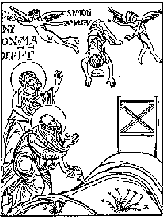




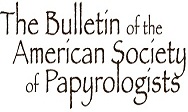
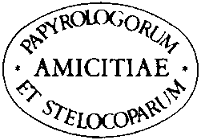
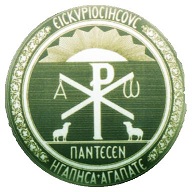





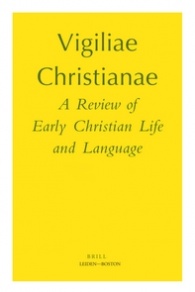






Multumesc pt. aprecierea unui text de pe blogul meu si scuza-ma daca perturb cu astfel de chestiuni minore atmosfera unui site atat de specializat.
Sincere felicitari pt. realizarile si seriozitatea ta, ma bucur mult ca te tii de treaba! Uite ca nasc si la “Orade” oameni 😉
Numai bine!
Adrian
Alin,
Good to see that all is going well since we attended the 2nd summer school in coptic papyrology in Leipzig.
Sincerely,
jeremy barrier
It’s nice to hear from you again, Jeremy. Please drop me a line sometime.
Domnule Suciu, Din cat am inteles, ati facut o traducere a textului hrisostomic la Evanghelia dupa Ioan. Avti si textul in limba romana?
Ma intereseaza in mod direct orice text hrisostomic in limba romana, deoarece realizez monografia operei sfantului. Informatia dvs, este foarte imporatnta pentru mine, iar raspunsul la aceasta intrebare va constitui inserarea lui in teza mea.
Astept un raspuns.
Cu multumiri, drd. Ana Bobu
Imi pare rau, nu am tradus textul in limba romana.
Pingback: Guest Post: Christian Askeland on the Coptic Versions of the Gospel of John | Alin Suciu
Pingback: Mănăstirea Sf. Antonie din Egipt (coptă) « Cu drezina
Salut, am dat intamplator peste un obiect cu o scriere a carei provenienta ma depaseste, si eram curios ce parere ai. http://www.scribd.com/doc/101336264/1
E vorba de un palimpsest scris pe pergament, care se afla in colectia Universitatii din Heidelberg. Este un manuscris magic in limba copta, asa numita Rugaciune a Fecioarei in Bartos (probabil Parthia).
Multumesc mult de raspuns. E posibila totusi o legatura intre rindeaua acoperita de semne pe care o detin eu, si limba copta? Au fost folosite astfel de ritualuri, in Transilvania de exemplu? Stiu ca dupa normele actuale, intrebarea mea suna ridicol, doar ca am trecut de la chirilic la glagolitic si de la Cornelius Agrippa la copti si inca nu am reusit sa gasesc un indiciu concret de provenienta al obiectului. Sper ca nu am sarit calul, postand aici un jurnal al insuficientelor mele. Multumesc inca o data pentru timpul acordat.
Abia acum am inteles ca te intereseaza, de fapt, obiectul de lemn si ca ai pus manuscrisul din Heidelberg doar pt comparatie.
Nu sunt sigur in lipsa unor fotografii din mai multe unghiuri, dar la o prima vedere obiectul imi pare un fals. Forma rigida a literelor imi da impresia ca ele au fost incizate de o mana moderna, nefamiliara cu acest tip de decoratiuni. S-ar putea, totusi, sa ma insel.
Literele pe care le imita sunt caractere magice care apar in documentele magice grecesti si copte. Cred ca Nicolae Vlassa a numit undeva aceste litere “scriere perlata”, dupa cerculetele pe care le au la capete.
Prudenta supozitiilor tale e justificata, dar daca vorbim aici de un fals, te asigur ca nu e facut de mine. Personal nu cred ca rindeaua e falsa. Faptul ca nu am reusit sa mai gasesc inca o unealta de acest gen pentru comparatie, modul total intamplator prin care am intrat in posesia ei, ani buni de zile inscriptiile stantate pe ea ne avand importanta pentru mine, si urmele de uz indelungat al uneltei urmat de reparati la diferite intervale de timp, au dus la concluzia ca rindeaua e un instrument folosit in tamplarie, dar a carei varste nu o pot plasa. Un motiv in plus pentru a crede ca unealta nu e falsa, la un interval considerabil de timp, am intrat in posesia unei barde de tamplarie, surse total diferite, inciziile aici in discutie fiind la randul lor ignorate pana in anul 2007, cand am inceput sa devin curios de provenienta lor.
http://www.scribd.com/doc/101717319/2
Evident caracterul si intentiile mele nu pot fi cantarite aici, dar cu permisiunea ta evident, voi trimite o serie de poze in detaliu in perioada urmatoare.
Poti lasa o adresa de mail unde sa trimit pozele mentionate mai sus? Multumesc
Adresele mele de e-mail le gasesti mai sus, in sectiunea CV.
Felicitările mele pentru asemenea realizări. Faptul că la vârsta Dvs vă specializaţi într-un domeniu atât de puţin căutat astăzi, este o onoare şi o promisiune pentru filologie şi istoria Bisericii.. Dumnezeu să vă binecuvânte cu acuitate spiritual-intelectuală şi prosperitate în studii şi în viaţă. Best wishes!
Felicitari!
Tineti-o tot asa!
Thank you for the great work you are doing.
oh dang this is impressive,
i’m a young student of judaism and early christianity (and a prospective giyoret) and your website is going to be an invaluable resource. please talk to me some time if it means i could get a word of your da’at out of u~
– auriel
Felicitari, Alin pentru frumoasele realizari. Ma bucur sincer!
Eugen J. Pentiuc
Mulțumesc, Părinte Eugen! Sunt onorat de aprecieri.
excellent, very much impressed;
I shall try to send you some publications that I wrote on the history of the Copts, perhaps you can link them on one of your websites.
rachad mounir shoucri
Dear Professor Suciu,
I constantly follow your excellent research on Coptic literature. At the moment it would be necessary for me to read two of your work:
1) “TheInvestiture of Abbaton, the Angel of Death. A New Translation andIntroduction,” in T. Burke – B. Landau (eds.), New Testament Apocrypha: More Noncanonical Scriptures (GrandRapids, MI: Eerdmans, 2016) 526-554 (with a contribution by I. Saweros).
2) “TheCoptic Physiologus: Evidence of an Early Translation.” The Physiologus between East and West.Diffusion and Transmission of an Early Christian Text on Nature,Paris, June 15-17, 2017.
Infortunately the first article is not available in your libraries. As for your paper about the “Physiologus”, it is impossible to find even a summary.
I would be very grateful if you would tell me where to find the online versions of them, if it is possible.
Yours most sincerely,
Eugenia Smagina